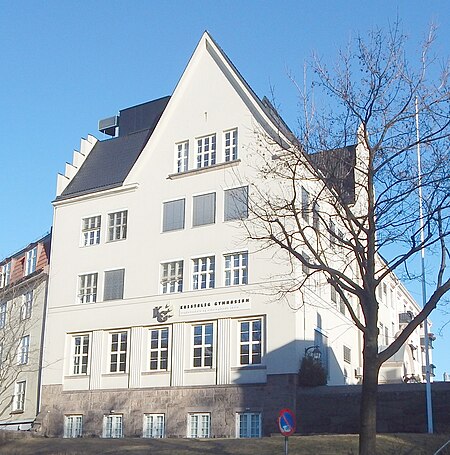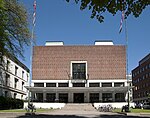Kristelig Gymnasium

Kristelig Gymnasium (KG), founded in 1913, is a selective, private Christian college preparatory school located in Oslo, Norway. The school offers 3 years of college preparatory studies at the high school level, Videregående skole, offering advanced courses in sciences, languages, and social sciences, including introductory classes to business and law. In addition, grades 8, 9 and 10 (junior high school) is offered, with the courses mandated by Norwegian law. The school's students score the highest among all private Norwegian schools in national, standardized tests.Religion or bible study is a "required elective" for all students. The school has a Lutheran priest on staff, and daily bible studies held by students or faculty is broadcast on the public address system every morning, following daily news and information. All current students and alumni receives the biannual publication "KG-Nytt". The school is owned by Det Norske Misjonsselskap, Normisjon and Norsk Luthersk Misjonssamband.
Excerpt from the Wikipedia article Kristelig Gymnasium (License: CC BY-SA 3.0, Authors, Images).Kristelig Gymnasium
Homansbakken, Oslo Frogner
Geographical coordinates (GPS) Address Nearby Places Show on map
Geographical coordinates (GPS)
| Latitude | Longitude |
|---|---|
| N 59.9239 ° | E 10.7294 ° |
Address
Kristelig gymnasium
Homansbakken
0350 Oslo, Frogner
Norway
Open on Google Maps







